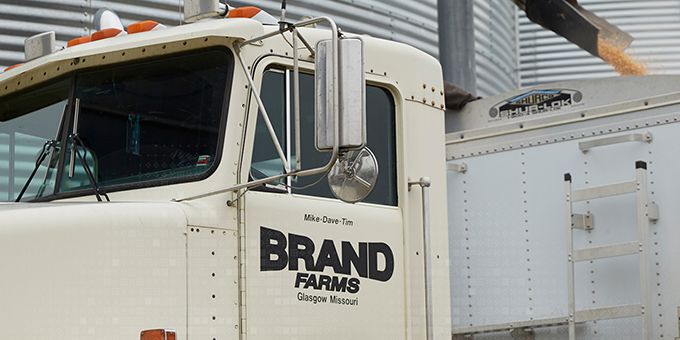It’s amazing how much technology has become an everyday part of our family farm, which has grown to 2,100 acres. Instead of a notebook, we use digital tools like FieldView™ so we have all of our data right at our fingertips.
 Using Technology to Streamline Planting and Increase Yield
Using Technology to Streamline Planting and Increase Yield

Tim Brand, Fourth Generation Farmer, Glasgow, MO | The Climate Corporation
Thinking back to my days as a farm kid, I remember how my father and uncle would track their data for the family farm. Back then technology consisted of hand-written notes in a notebook for seeding, planting, and fertilizer records. This was their sacred guide to determine what they would plant for the following season.
Fast forward 30 years, and it’s amazing how much technology has become an everyday part of our family farm, which has grown to 2,100 acres, (I own 400 of those). Instead of a notebook, we use digital tools like FieldView™ so we have all of our data right at our fingertips.
I’ve always seen myself as wanting to be on the forefront of farming technology, because it’s an important part of finding ways to push the limits on yield. It used to be that farming was about how much yield you could produce on a field. With FieldView I can now see how I can increase yield for every thousand plants. In the future I can see us using this technology to improve yield by the foot.
Constructive Collaboration
A big part of my success as a farmer and my ability to push limits is the relationship I have with my dealer. With digital farming tools we can work together so much more effectively. Immediately after harvest, we’re looking at the FieldView yield analysis tool to see where we could improve on yield for the following season. The tool shows us what seed worked the best on my fields’ different soil types, and we use that information to plan my seed purchases for the following year.
That information from yield analysis also guides the seed prescription conversation with my dealer. We sit down together to take a look at how different varieties performed at different populations, and then write variable rate seeding prescriptions using the FieldView advanced seed prescription tool. What used to take hours can now be done in a matter of five minutes or less.
In addition to the potential yield impact, the time savings is a good reason to invest in learning about digital farming. Another way I carve out extra time is using Remote View. My dad or my uncle might be out in the field planting, spraying or harvesting, and either my dealer or I can see what’s happening in the cab as they make that pass on the field and help troubleshoot any problems that might arise. What used to be a 30 or 40 minute trip to the field often can now be handled in a few minutes on the phone. During a busy season like planting, getting that time back is really valuable - especially if I get to spend it with my family.

We’ve been farming this land for three generations now, and the best part about it is that every day provides a different challenge or something new. From the notebooks of years past to the iPad® devices of today, the changes keep coming. But one thing that will never change is how much I love what I do.
 About Tim Brand
About Tim Brand
Tim Brand is a fourth generation farmer from Glasgow, Mo. He raises corn and soybeans alongside his father David and uncle Michael Brand. They also own and operate a custom pesticide application business. Tim lives on the farm with his wife Amanda, daughter Eleese, and son Tristan.
The content & opinions in this article are the author’s and do not necessarily represent the views of AgriTechTomorrow
Comments (0)
This post does not have any comments. Be the first to leave a comment below.
Featured Product

